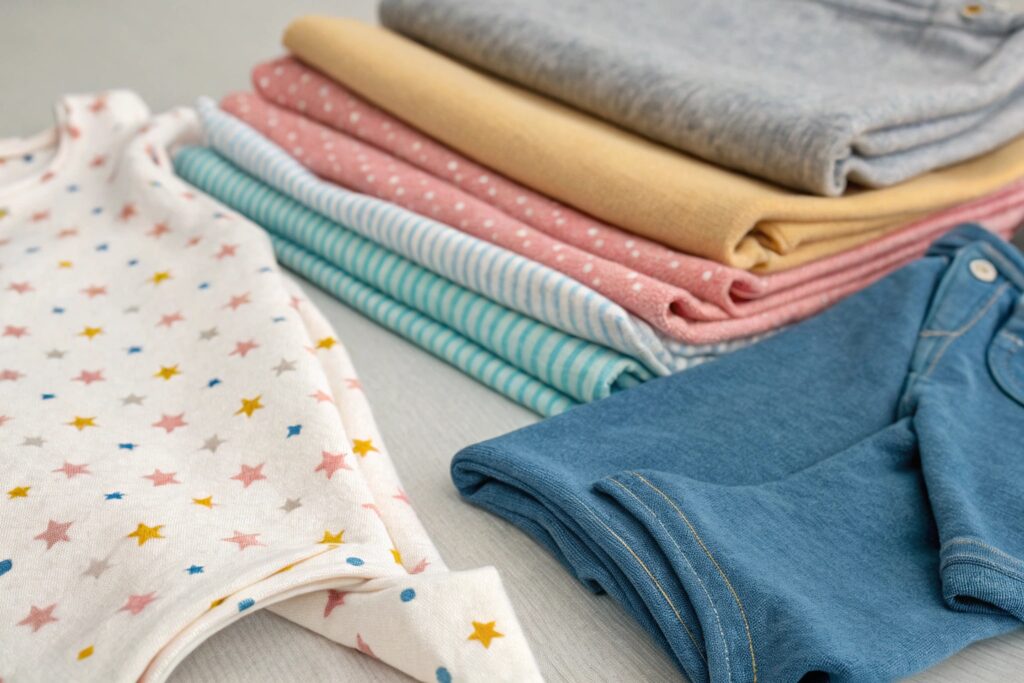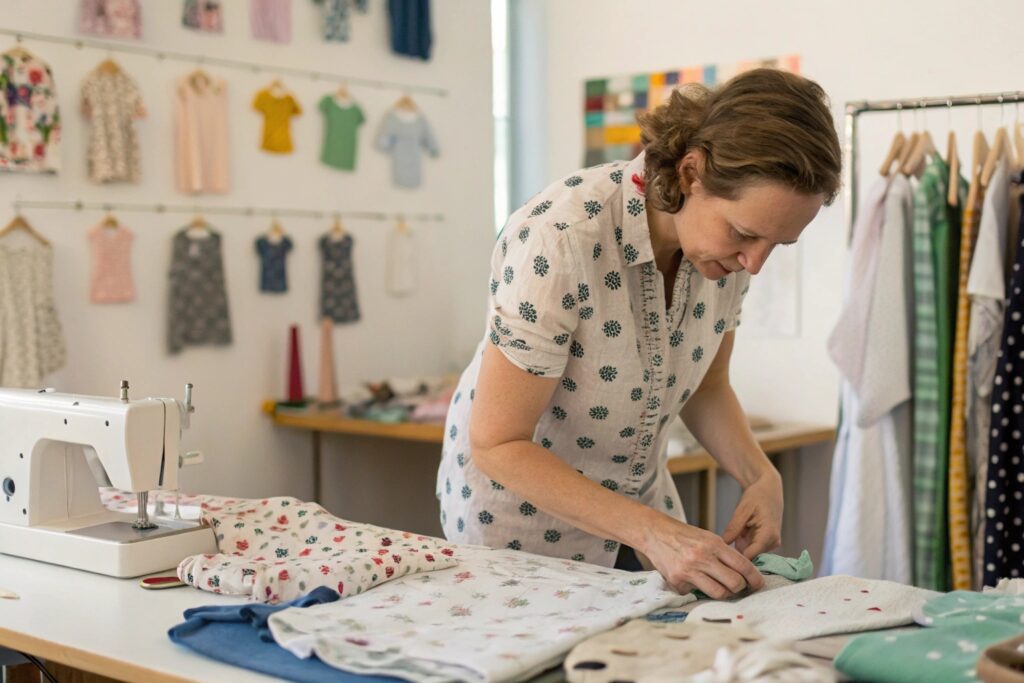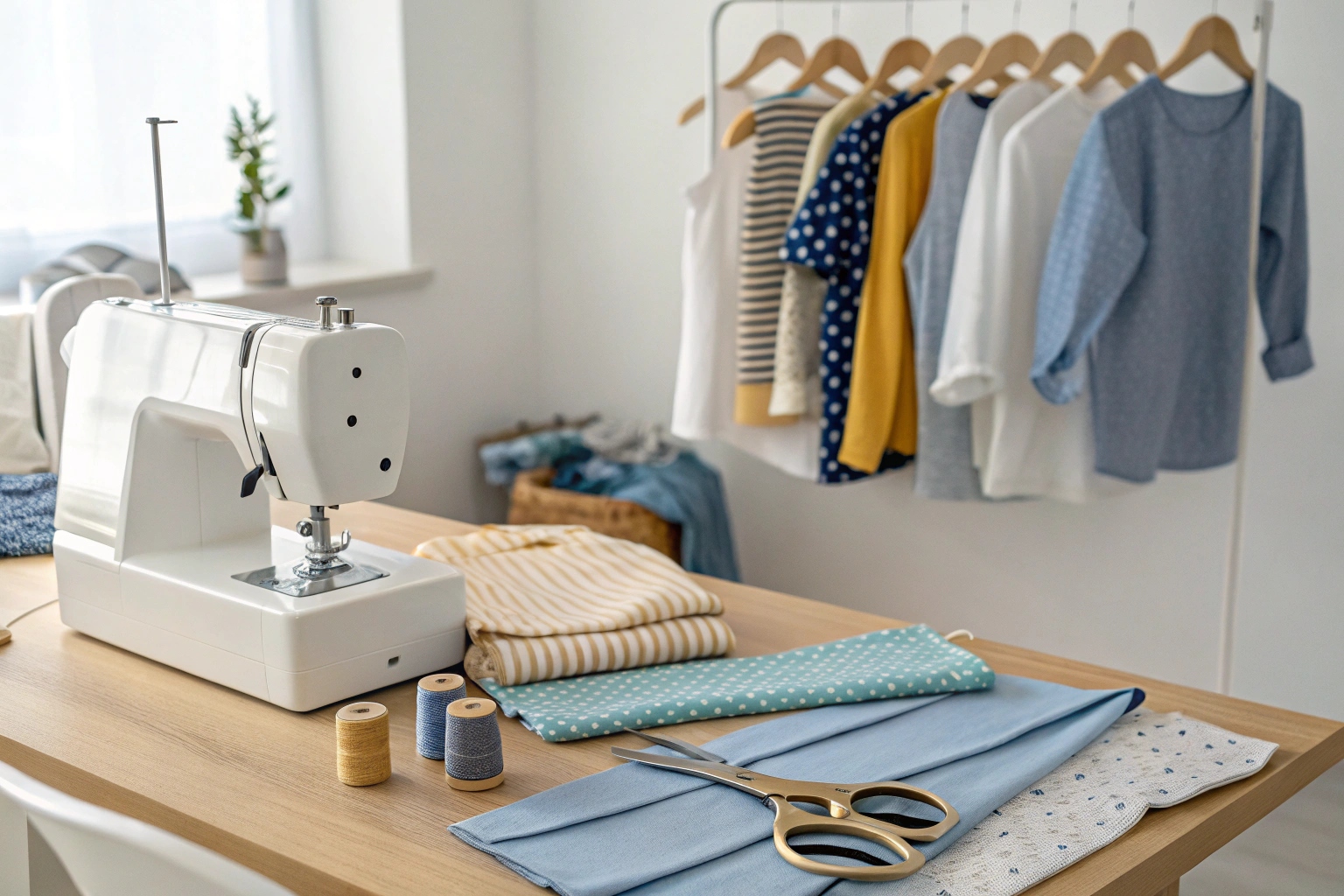Fabric is cheap, and kidswear is small—so it should be cheaper to sew it yourself, right? Not always.
Sewing kidswear can be cheaper than buying, especially for basics or bulk, but it depends on fabric costs, tools, time, and your sewing skills. DIY works best when done strategically.
For crafty parents or small startup brands, making kidswear at home seems like a smart, budget-friendly option. But once you calculate materials, time, and results, it may not always save money.
What Materials and Tools You Need to Sew Kidswear?
Sewing kids’ clothing isn’t just about thread and a machine. You'll need the right materials, tools, and setup for decent results.
To sew kidswear, you need quality fabric, basic sewing tools, accurate patterns, and a reliable sewing machine. Costs add up if you start from scratch.

What are the basic tools and materials required to start sewing kidswear at home?
Here’s a starter checklist for anyone new to sewing children’s clothes:
| Item | Estimated Cost | Purpose |
|---|---|---|
| Sewing Machine | $150–$300 | Core tool for all garment construction |
| Cotton Knit/Jersey Fabric | $5–$10/yard | Soft, stretchy, breathable base fabric |
| Sewing Thread | $2–$4/spool | Matches or contrasts with fabric |
| Scissors or Rotary Cutter | $10–$20 | Clean, accurate cuts |
| Measuring Tape/Ruler | $2–$5 | Size accuracy |
| PDF or Printed Patterns | Free–$10 | Blueprint for cutting and shaping |
| Pins/Clips | $3–$5 | Hold fabric before sewing |
| Iron and Ironing Board | Already owned? | Crucial for seam setting and clean edges |
You may also need specialty tools like ballpoint needles (for stretch fabrics) or snap pliers if you’re making bodysuits.
Are there hidden material costs in DIY sewing that people forget?
Yes. A few examples:
- Fabric waste: You can lose 10–20% of fabric in cutting errors.
- Notions: Elastic, interfacing, snaps, or zippers add cost.
- Trial and error: Your first few pieces may not turn out wearable.
- Printer ink/paper: If using digital patterns, printing can cost extra.
It’s easy to overlook these, but they affect your total cost per garment.
How DIY Costs Compare to Store-Bought Clothing?
Homemade doesn't always mean cheaper. It depends on your fabric sources, design, and skill.
Sewing kidswear can be cheaper than store-bought basics if you buy fabric smartly. But for fast fashion or clearance items, DIY is often more expensive.

What’s the average cost to sew one basic kidswear item at home?
Let’s take a cotton T-shirt as an example:
| Expense | DIY (Home Sewn) | Store-Bought Equivalent |
|---|---|---|
| Fabric (1 yd) | $6–$8 | - |
| Thread & Notions | $1–$2 | - |
| Electricity + Equipment | ~$1 (estimated) | - |
| Time (1 hour labor) | $0–$20 (if paid) | - |
| Total | $8–$30+ | $5–$15 (Walmart, Target) |
If you value your time as free (i.e., hobby sewing), the DIY shirt might cost you $8–$10. But if you’re paying yourself even minimum wage, the “true” cost could be $25 or more.
When does sewing become cheaper than retail?
When you:
- Buy fabric in bulk
- Use leftover or recycled materials
- Make multiple items from one pattern
- Avoid premium tools or branded patterns
A babywear startup might hit $4–$5 per piece by sewing in bulk and using simple, repeatable designs. But for one-time pieces, retail often wins on price.
When Sewing Kids’ Clothes Saves Money?
It depends on the situation. DIY is more affordable in specific cases—not across the board.
Sewing kidswear saves money when you need unique sizing, want better quality than fast fashion, or reuse materials you already own.

In which scenarios does sewing provide clear financial advantage?
- Special sizing needs: If your child is slim, tall, or needs sensory-friendly seams, DIY gives control.
- Matching outfits: Coordinating sets for twins, family events, or holidays cost less when handmade.
- Repairing/upcycling: Turning dad’s T-shirt into a toddler romper = zero fabric cost.
- Multiple kids: Sew once, hand down multiple times.
- Ethical shoppers: Organic or ethical babywear is pricey. Sewing it yourself with organic fabric might save 40–60%.
Here’s an example comparing a matching sibling romper:
| Item | Handmade (DIY) | Branded Organic Version |
|---|---|---|
| Organic Fabric (1 yd) | $10 | - |
| Notions & Thread | $2 | - |
| Total | ~$12 | $35–$60 |
What strategies can make DIY sewing even more cost-effective?
- Join fabric co-ops: Shared bulk purchases = lower prices
- Buy end-of-roll or scrap bundles: Often sold at 50–70% discount
- Print free patterns: Many indie designers offer basic patterns free
- Choose multi-size patterns: Reuse for growing children or siblings
- Cut in batches: Saves time and reduces waste
Treat your sewing time as valuable—even if you’re not selling.
Pros and Cons of Making Your Own Children’s Apparel?
Sewing your own kidswear can be creative and rewarding—but it’s not always the best choice for everyone.
DIY sewing gives control, creativity, and satisfaction—but requires time, skill, and a willingness to experiment. For some, it’s cheaper. For others, it’s a labor of love.

What are the biggest benefits of sewing your own children’s clothing?
| Pros | Details |
|---|---|
| Custom Fit | Adjust for body shape, sensory needs |
| Fabric Control | Choose organic, soft, or unique materials |
| Creative Expression | Personalize styles, colors, and details |
| Ethical Satisfaction | Avoid fast fashion supply chains |
| Skill Building | Learn a craft with long-term value |
You also create family memories. Some parents sew keepsakes from baby clothes or use grandma’s fabric stash to pass on tradition.
What are the challenges and downsides of DIY kidswear?
| Cons | Details |
|---|---|
| Time Investment | Each piece can take 1–3 hours or more |
| Upfront Costs | Tools, machines, and supplies add up |
| Steep Learning Curve | Mistakes are common early on |
| Limited Stretch/Fit Expertise | Tough for activewear or fast-growing kids |
| No Return Policy | If it doesn’t fit—you remake it yourself |
DIY sewing is worth it when you enjoy the process. If you’re purely focused on saving money, retail often wins.
Conclusion
Sewing kidswear can be cheaper than buying—but only under the right conditions. With careful planning, the right tools, and smart fabric choices, DIY can bring savings, satisfaction, and a perfect fit.










